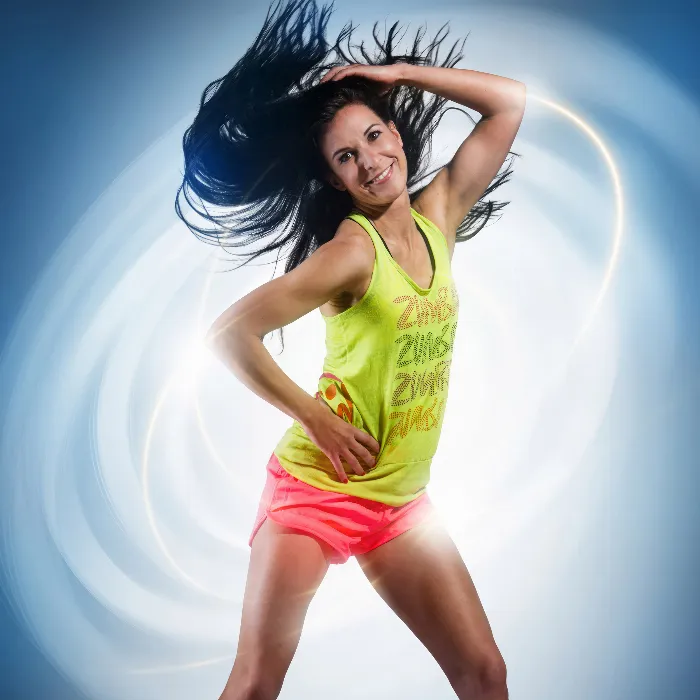Are you facing the challenge of retouching sports portraits tactfully and professionally? With the technique of frequency separation, you can edit colors and details of your images independently. This method is especially suitable for retouching faces, ensuring that your image remains authentic without losing its natural quality. Let’s take a closer look at how this technique works and what steps you should follow to achieve optimal results.
Main Insights
- The frequency separation allows for separate editing of colors and details.
- Using this technique, you can specifically remove skin imperfections and other distracting elements while keeping the overall image natural.
- Using masks in combination with blur and high-pass filters leads to impressive results.
Step-by-Step Guide
Start by opening your image in your preferred editing software. I will show you how to work with frequency separation in five basic steps:
For the first steps, it’s important to duplicate and adjust the appropriate layer:
First, duplicate the layer with your model and rasterize it so you can edit the layers separately. Create a group by selecting both layers and grouping them with CTRL+G or Command + G. Name this group appropriately, for example, "FS" for frequency separation.
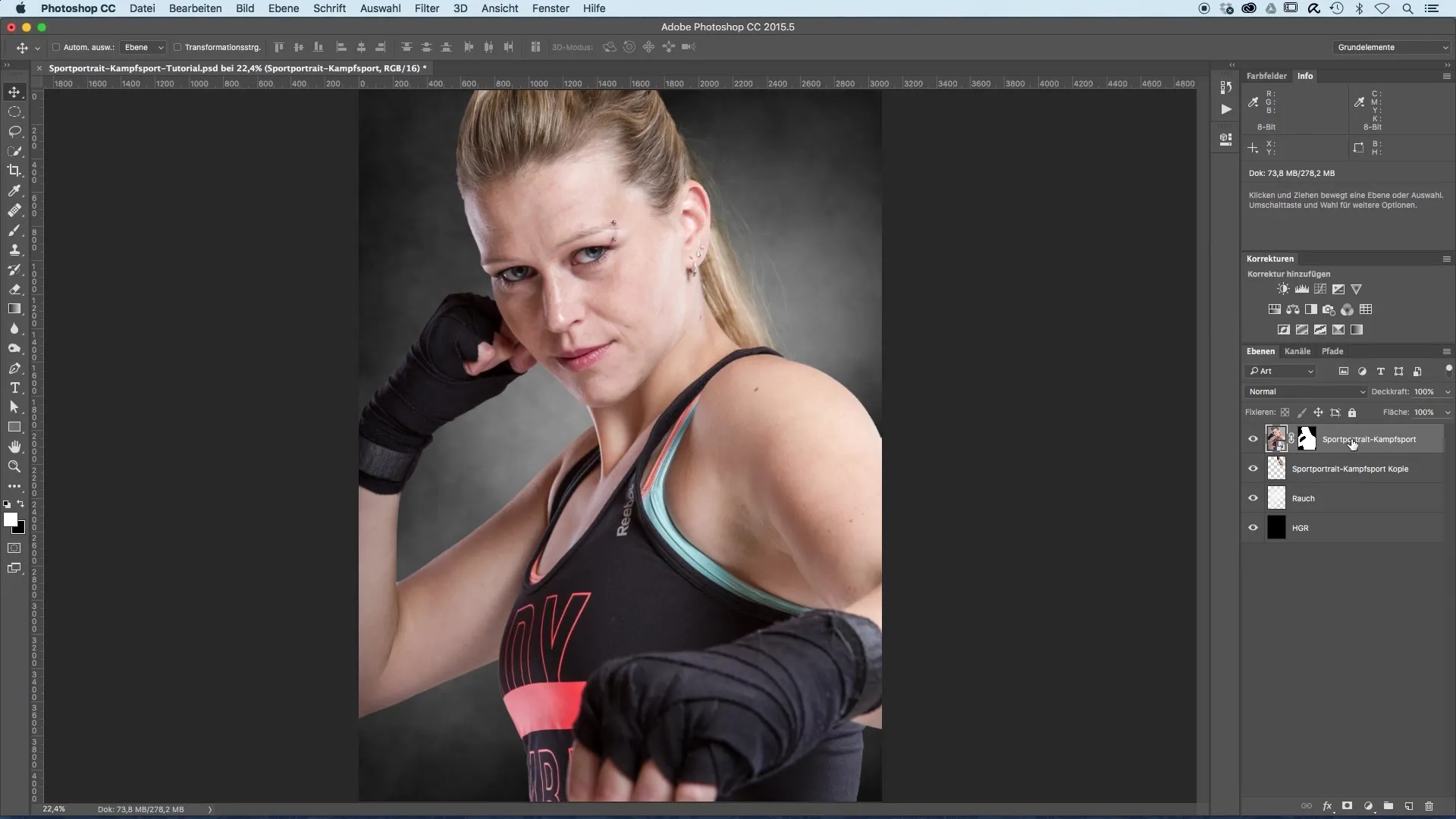
Now you have two layers that you can edit individually. Name the bottom layer "Color Layer" and start editing. Apply a blur filter to this layer to reduce imperfections. Set the blur to about 15 pixels to ensure that the refinement is not too aggressive.
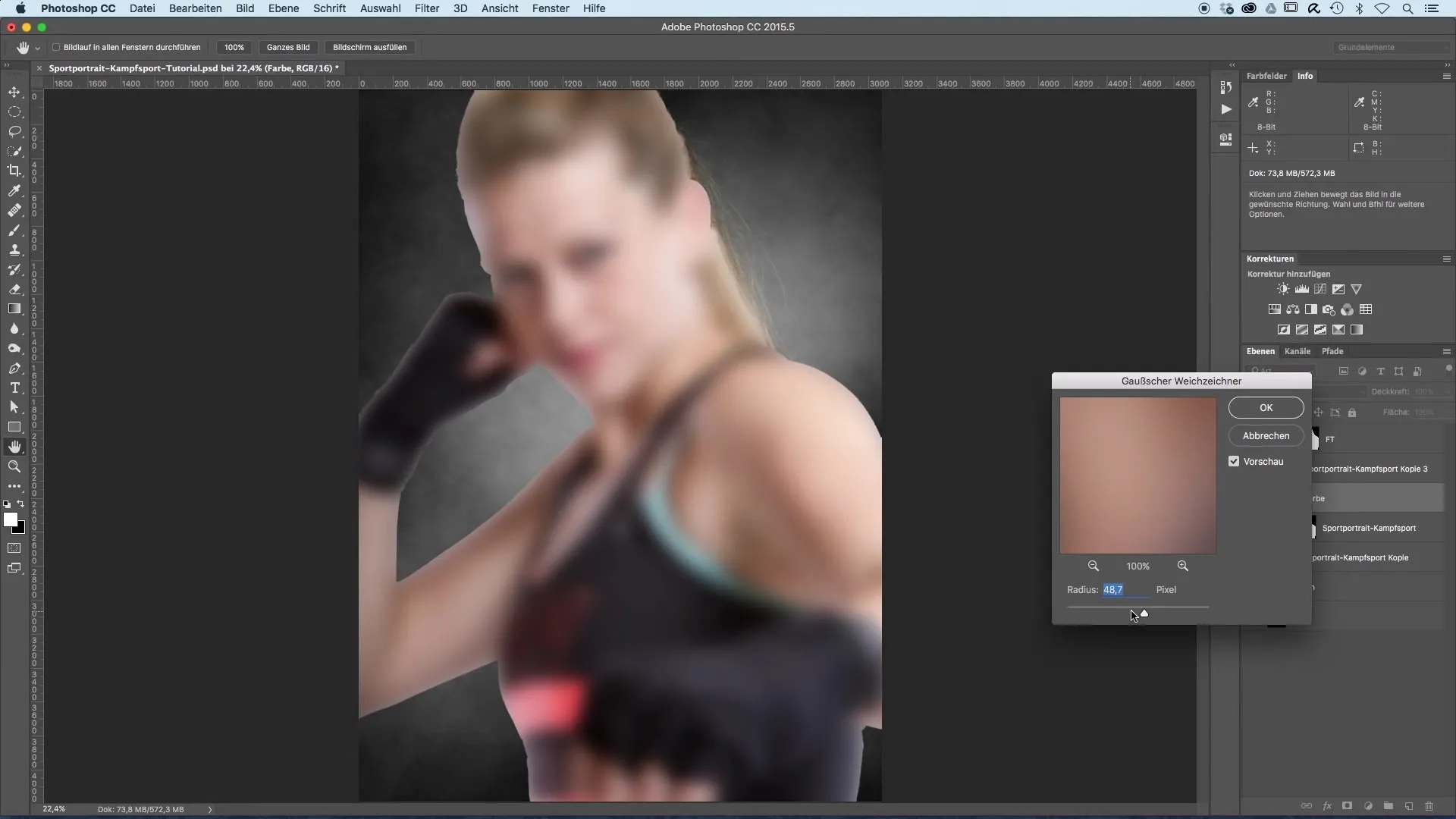
Now let’s move to the top layer, which you rename to "Detail Layer." At this step, it’s important to make corrections to brightness and contrast. Set the contrast to -50 and confirm your settings. The detail layer is now edited with a high-pass filter, also set to 15 pixels. Set the layer to the "linear light" mode.
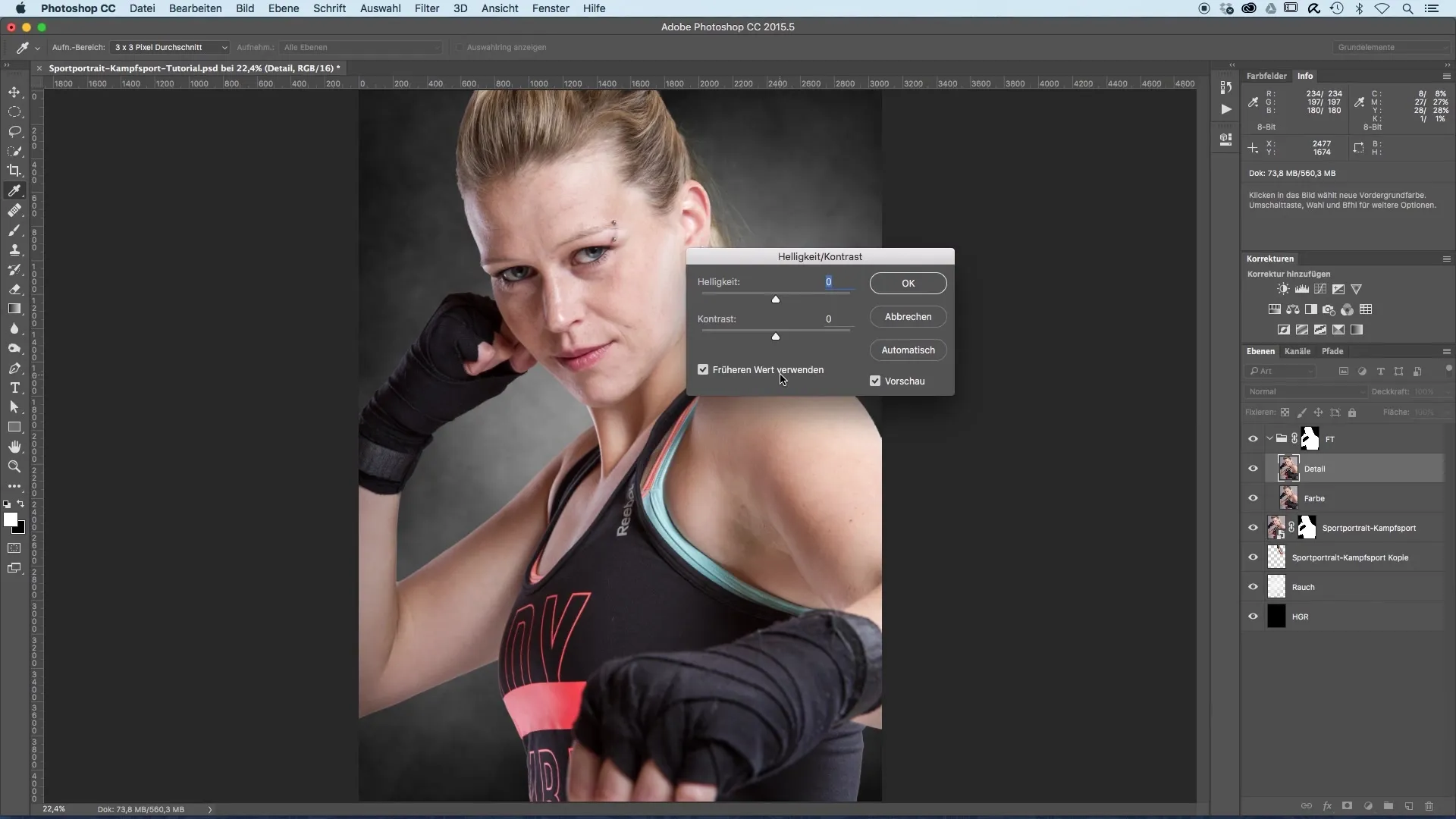
Now it seems that there is no difference between the two layers. To optimize the skin retouching, switch the detail layer back to normal to make small imperfections visible. Here’s a little trick: use a levels adjustment and set the contrast significantly higher. This will allow you to spot any imperfections in the image and edit them precisely.
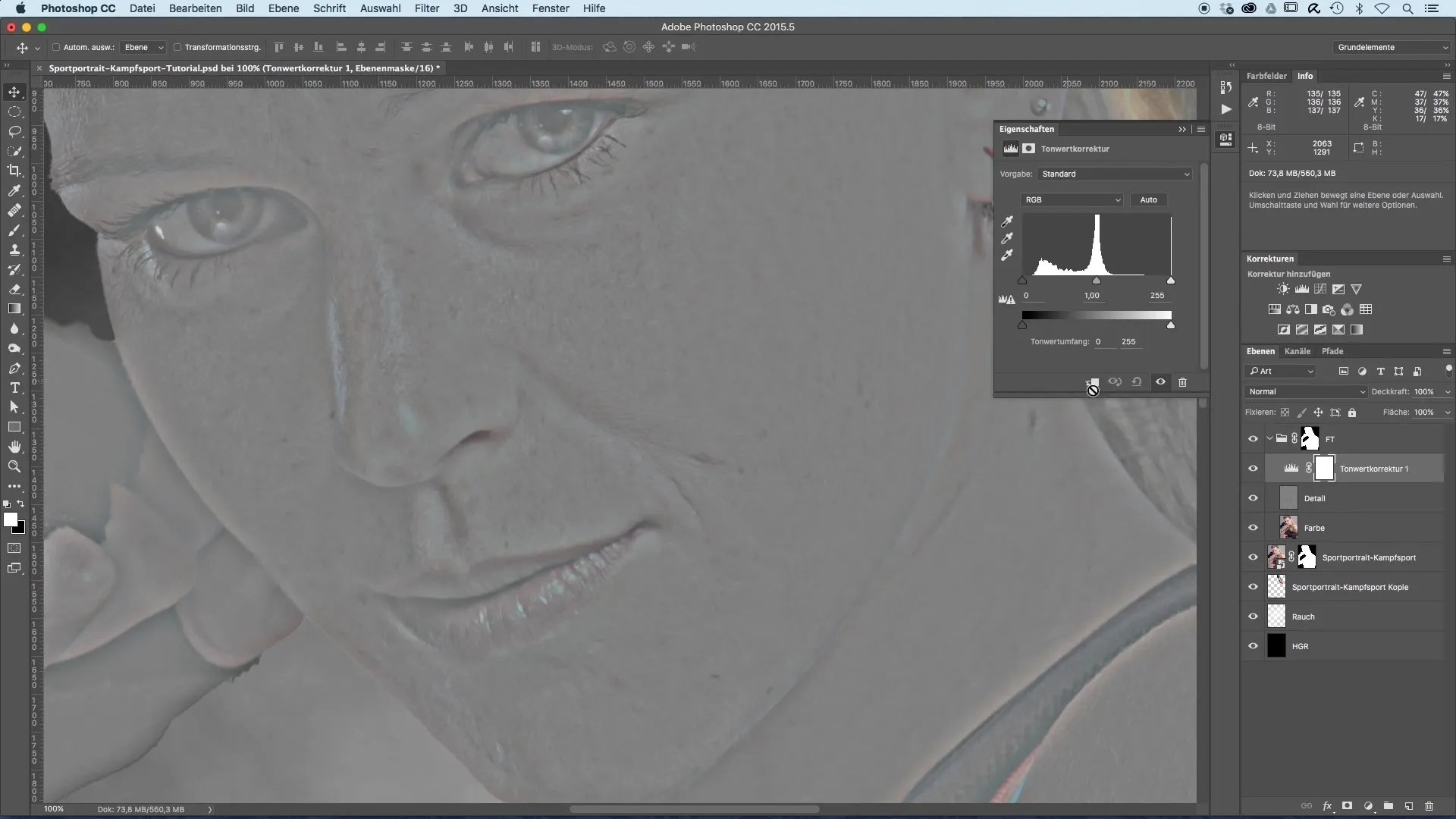
Take your time to gently retouch the imperfections and be careful not to lose the natural appearance of your model. At the same time, clean up the areas that bother you, like small wrinkles on the face or blemishes on the skin. Use the healing brush to carefully edit the disturbances.
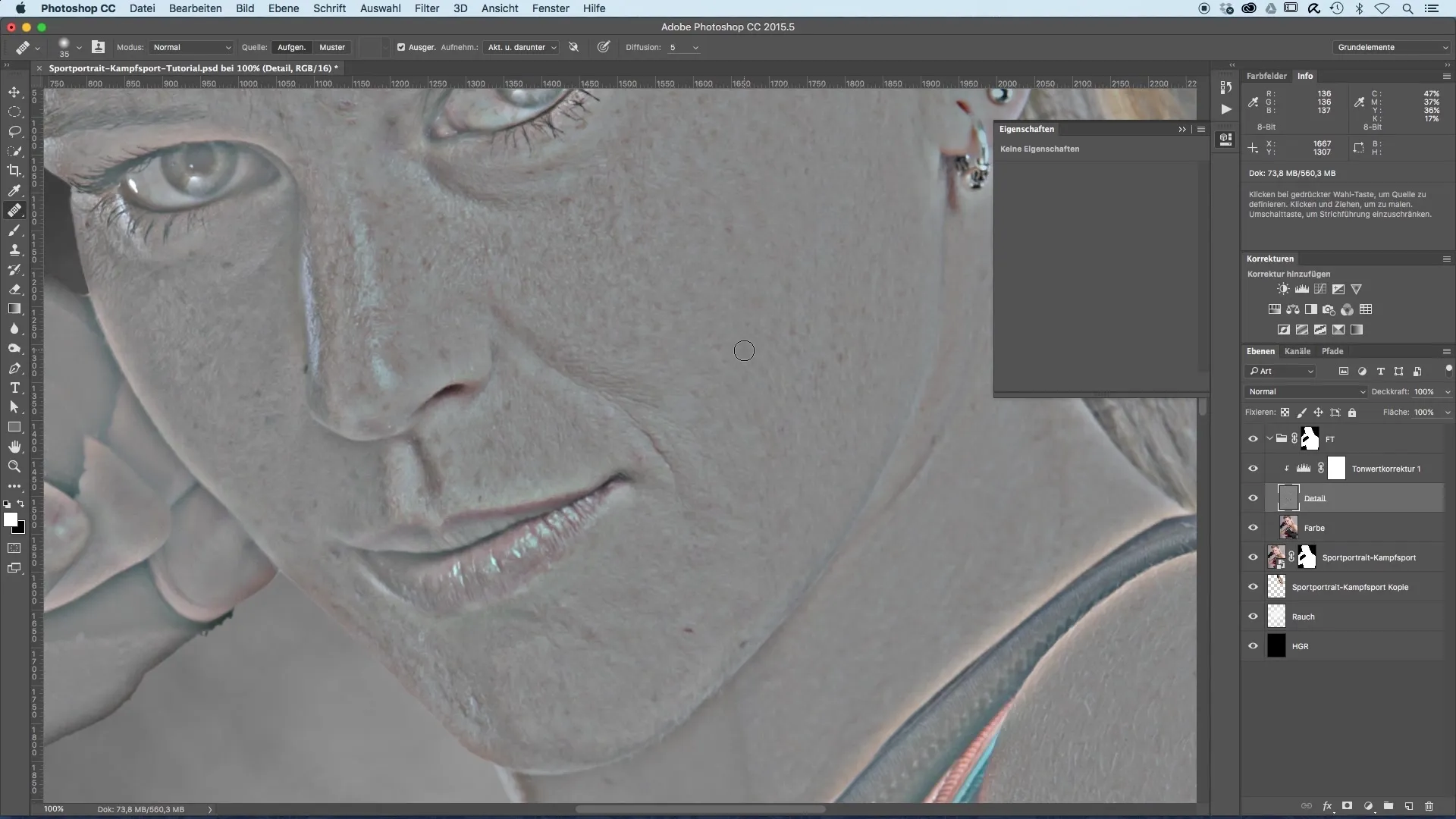
Move calmly and purposefully. Remove distractions without affecting the naturalness of the image. Leave some details, like slight wrinkles, intentionally to give the portrait character. After all, you want it to be a sports portrait that reflects the awe and strength of your models.
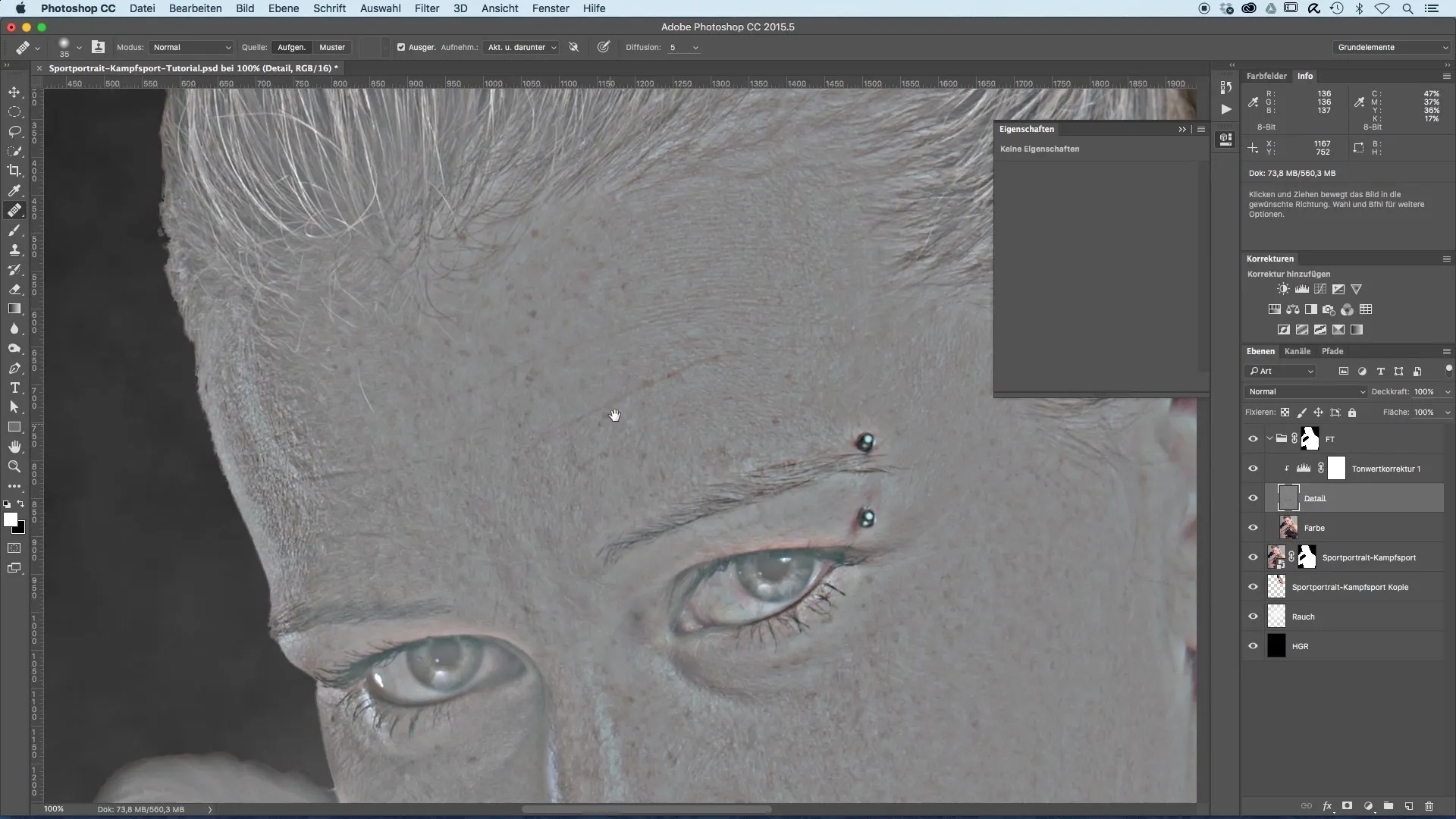
Let’s move on to the final touches. Create a last mask for the color layer, gently blur it, and make the final adjustments to the skin texture. This is done by applying the blur filter again, which you additionally adjust without setting it too strong.

Finally, turn off the levels adjustment and masks to assess the overall impression of your final image. Look at the before-and-after comparison and check if you are satisfied with your result. Often, when fading out the corrections, you realize how much impact the editing actually has on the overall image.
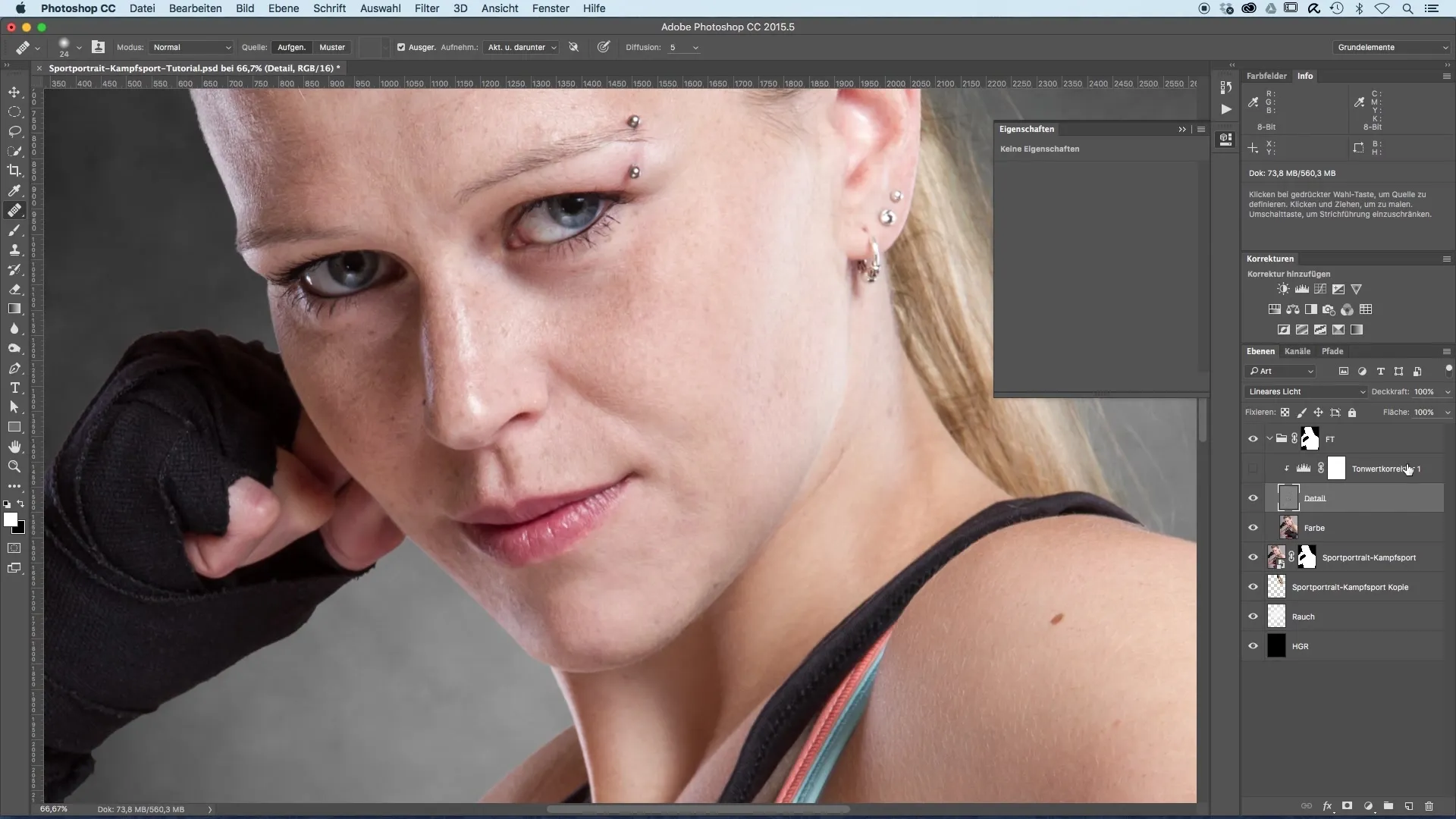
Summary – Retouching Sports Portraits with Frequency Separation
In this guide, you learned how to optimize examples of sports portraits using effective frequency separation. The technique allows you to highlight the beauty of athletes in a completely new way without making the image look artificial.
Frequently Asked Questions
How exactly does frequency separation work?Frequency separation allows you to edit color and details of an image independently by splitting them into two separate layers.
How do I effectively remove small imperfections?Use a healing brush or clone stamp to selectively remove small flaws without altering the skin texture.
How do I switch between the layers?In the layers panel, you can simply click to switch between the layers and make the corresponding changes.
How important is it to leave natural skin features?Natural skin features like slight wrinkles give the image character and authenticity, especially in sports portraits.
Should I be cautious with color and detail editing?Yes, be careful not to disturb the details too much to preserve the natural look of the portrait.
